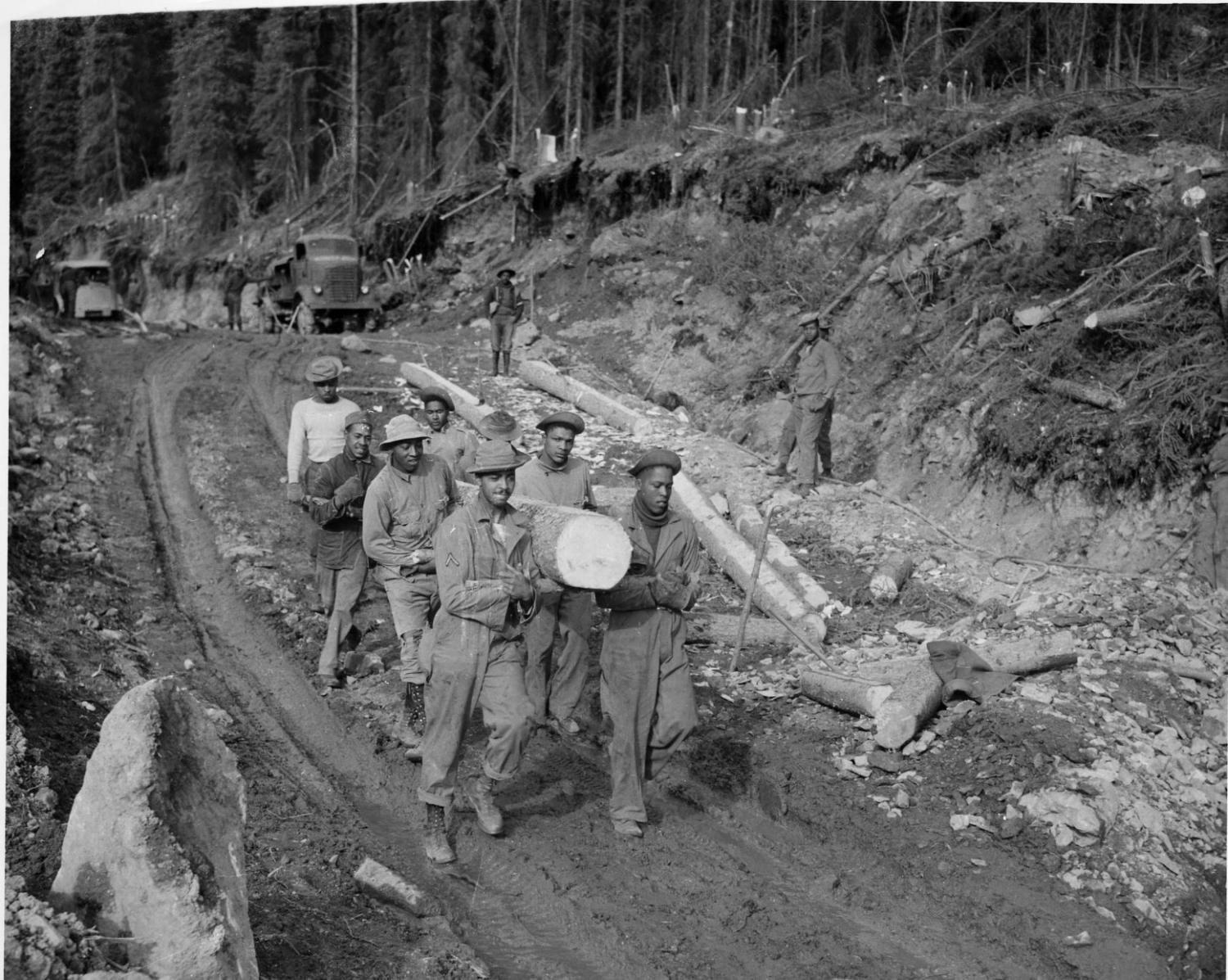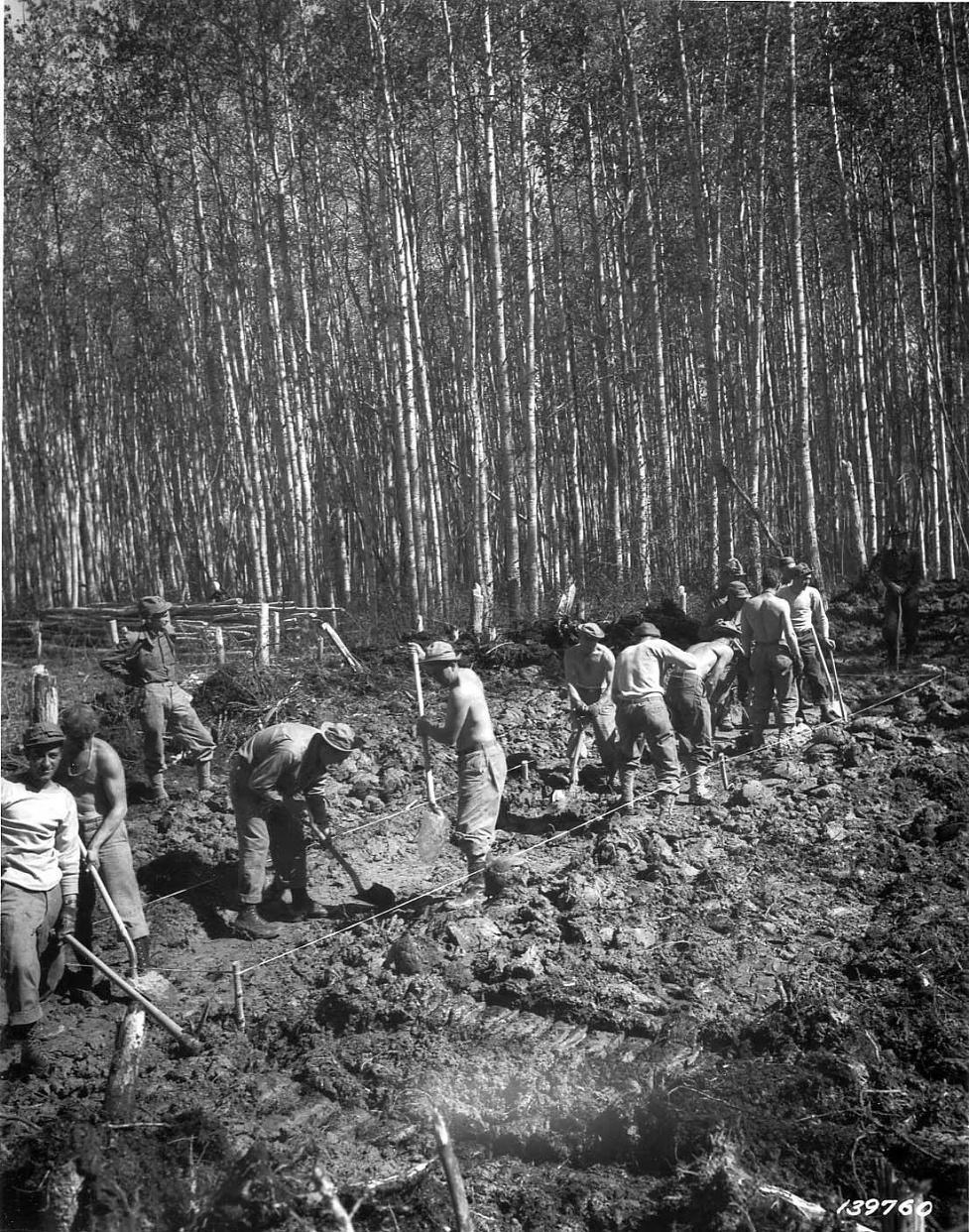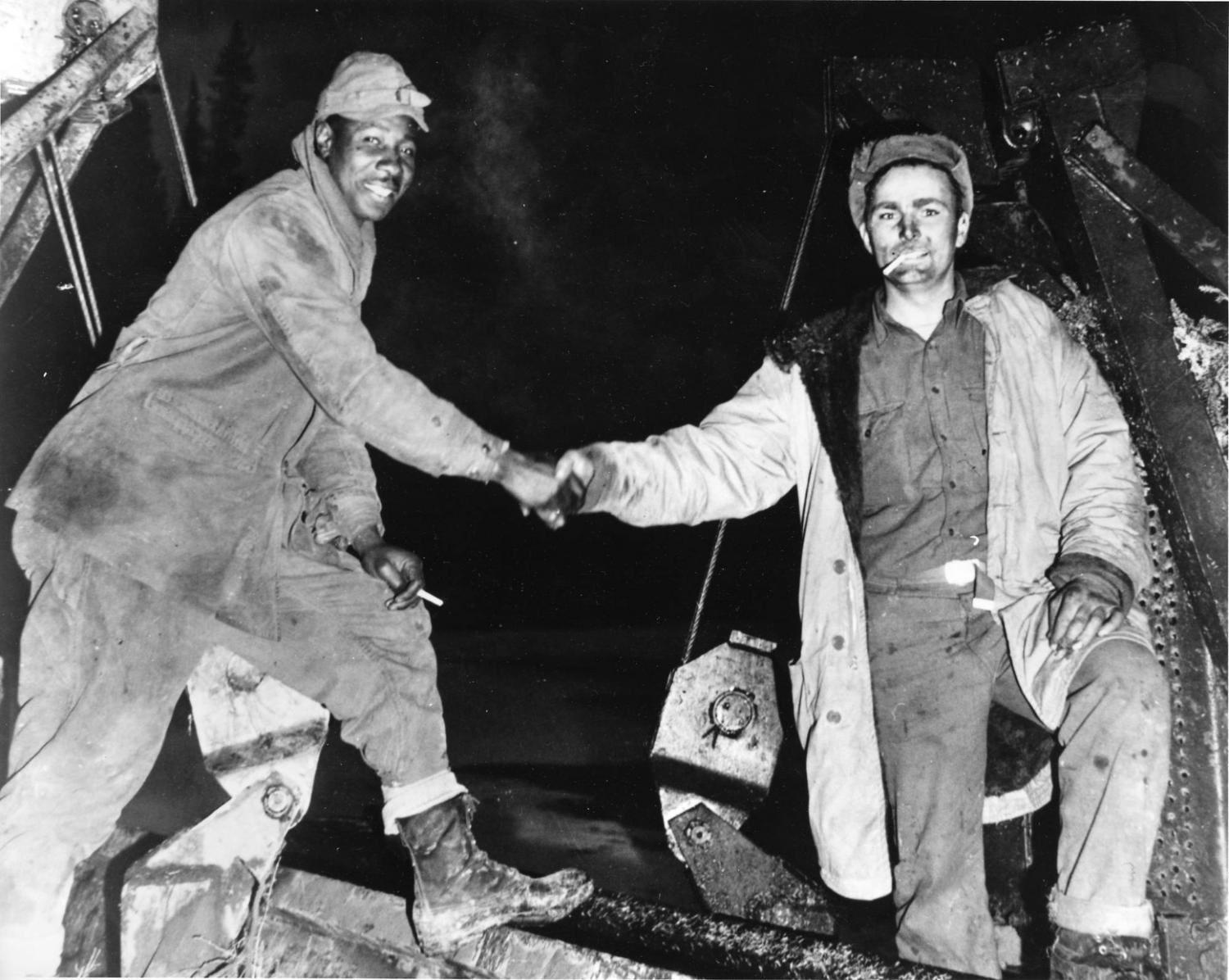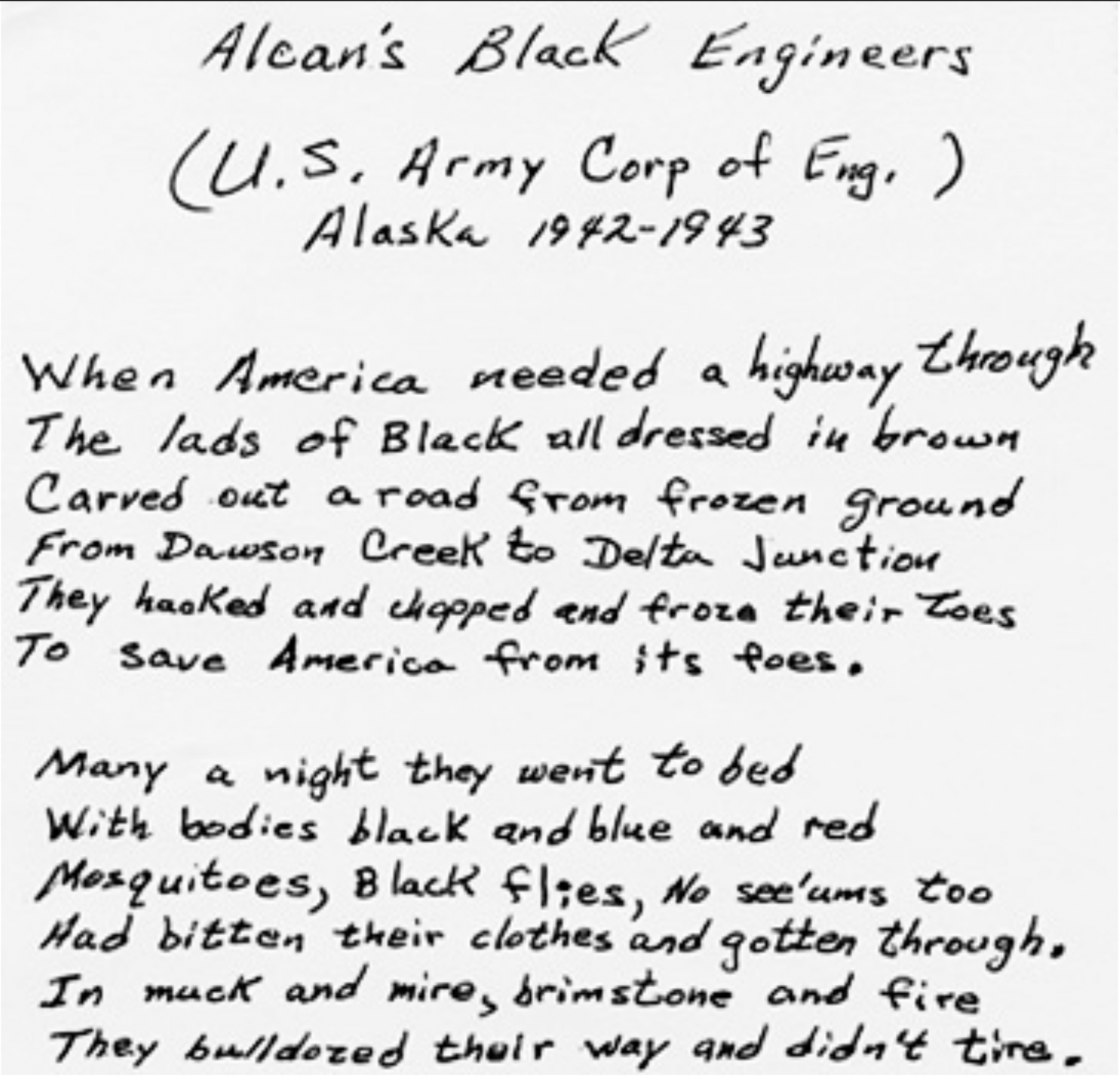Building the Alaska Highway
A feat of engineering leads to American racial progress — and further hardship for Indigenous in B.C.'s north
Date: 1942
For its first 75 years as an American state, Alaska’s remoteness was magnified by a lack of access. The United States had repeatedly pushed for a road connecting its northernmost territory — roughly 800 km north of the 49th parallel — with the rest of the country. That finally came to fruition after Japan attacked Pearl Harbour in 1941.
Fearing a Japanese invasion of Alaska, the U.S. now saw an inland route, which would ease the flow of goods and personnel, as a matter of national security. In the spring of 1942, Canada agreed to the highway after the U.S. promised to cover construction costs, maintain the route and turn over control of its Canadian stretch after the war ended. In return, Canada secured the property needed to build the highway, waived duties and taxes related to its development and use, facilitated the immigration of American workers and allowed them to use nearby timber and other resources as necessary.
The gruelling work to build the ALCAN (Alaska-Canada Highway) began in March of 1942. Over the next eight months, more than 25,000 men — a mix of Canadian and American civilians and some 11,000 soldiers from the U.S. Army Corps of Engineers — stubbornly punched a path from Dawson Creek in northeastern British Columbia through the Yukon to a small town in Alaska named Delta Junction. It was far from easy.
Men worked seven days a week, through dense forest and sinking bogs, swarms of bugs in the summer and subzero temperatures in the winter. At times, the ground was so swampy, crews pressed forward only by falling trees and laying them side-by-side, forming an uneven “corduroy road” that would shift and buckle under pressure. “I saw fellows so tired, they were ready to drop in their tracks. It was rush-rush-rush!” said a Canadian army officer who observed the feat. “Fellows were doing 18 to 20 hours a day on bulldozers. One was up to his neck in ice water repairing timbers in subzero weather. God, I admired them!”
African-American soldiers made up more than a third of all U.S. troops involved in the project. This group of nearly 4,000 men faced even greater hardship than the rest. Organized into Black-only regiments, the military barred them from visiting local communities along the route. Instead of heavy machinery, they often worked only with hand-held tools. And despite frigid conditions, many slept in tents while the army housed their white counterparts. The Black roadbuilders still excelled. Their exemplary work was later credited as a major impetus behind the American military's desegregation in 1948.
After Japan invaded the Alaskan islands of Attu and Kiska in June 1942, the pressure to complete the ALCAN increased. The following month, crews laid down an astounding 643 kilometres of road. Construction of the 2,400-kilometre highway concluded ahead of schedule on Oct. 25, 1942. The final cost was tagged at $138 million USD, making it the most expensive infrastructure project built during World War II. Six years after completion, the highway opened to the public.
The new road brought major change to B.C.’s rugged north, prompting significant economic development often centred around resource extraction. Fort St. John, Dawson Creek and other towns that once numbered in the hundreds soon counted thousands of residents. Indigenous people along the highway’s path bore the brunt of this change. The sudden influx of newcomers led to devastating flu epidemics, along with higher rates of alcohol dependency. As many Indigenous people lost their land, activities they had long relied upon to survive, such as fur-trapping, became disrupted by overhunting and more government regulation. Many found work in the new economy as living a traditional Indigenous life became more difficult.
Sources:
1. African American Trailblazers - Building the Alaska Highway. U.S. National Park Service, 2015, www.youtube.com/watch?v=ejQ-QF2SvKM.
2. Anselmi, Elaine. It Takes A War. Up Here, www.uphere.ca/articles/it-takes-war.
3. Castillo, Victoria Elena, et al. “Highways and Social Change.” ECHO: Ethnographic Cultural and Historical Overview of Yukons First Peoples, Institute for Community Engaged Research Press, pressbooks.bccampus.ca/echoyukonsfirstpeople/chapter/highways-and-social-change/.
4. The Construction of the Alaska Highway, 1942: The Role of Race in the Far North. Black Past, 23 Oct. 2017, www.blackpast.org/african-american-history/construction-alaska-highway-1942-role-race-far-north/.
5. D'Oro, Rachel. 'Way Past Time': Black Soldiers Who Helped Build Alaska Highway Honoured, 75 Years Later. CBC News / The Associated Press, 27 June 2017, www.cbc.ca/news/canada/north/alaska-highway-black-soldiers-1.4180534.
6. Gilchrist, C.W. Alaska Highway. The Canadian Encyclopedia, 5 Mar. 2013, www.thecanadianencyclopedia.ca/en/article/alaska-highway.
7. Harris, Julie. The Alaska Highway Corridor: Notes on the Indigenous Geography of a Canada at War. Northern Public Affairs Magazine, 6 Apr. 2016, www.northernpublicaffairs.ca/index/the-alaska-highway-corridor-notes-on-the-indigenous-geography-of-a-canada-at-war/.
8. Long, Tony. Oct. 29, 1942: Alaska Highway Built as Hedge Against Invasion. Wired Magazine, 29 Oct. 2010, www.wired.com/2010/10/1029alaska-highway/.
9. Military Highway to Alaska: Exchange of Notes at Ottawa, March 17 and 18, 1942. Federal Government of the United States, 1942, www.loc.gov/law/help/us-treaties/bevans/b-ca-ust000006-0261.pdf.
10. Pierce, J. Kingston. Alaska Highway: The Biggest and Hardest Job Since the Panama Canal. American History, Jan. 2001, www.historynet.com/alaska-highway-the-biggest-and-hardest-job-since-the-panama-canal.htm.
11. Valencia, Kris. Building the Alaska Highway. The Milepost, www.themilepost.com/slideshows/building-the-alaska-highway/.
12. Why Building of the Alaska Highway Is Still an Epic Feat 75 Years Later. B.C. Ministry of Transportation and Infrastructure, www.tranbc.ca/2017/08/10/why-building-of-the-alaska-highway-is-still-an-epic-feat-75-years-later/.






